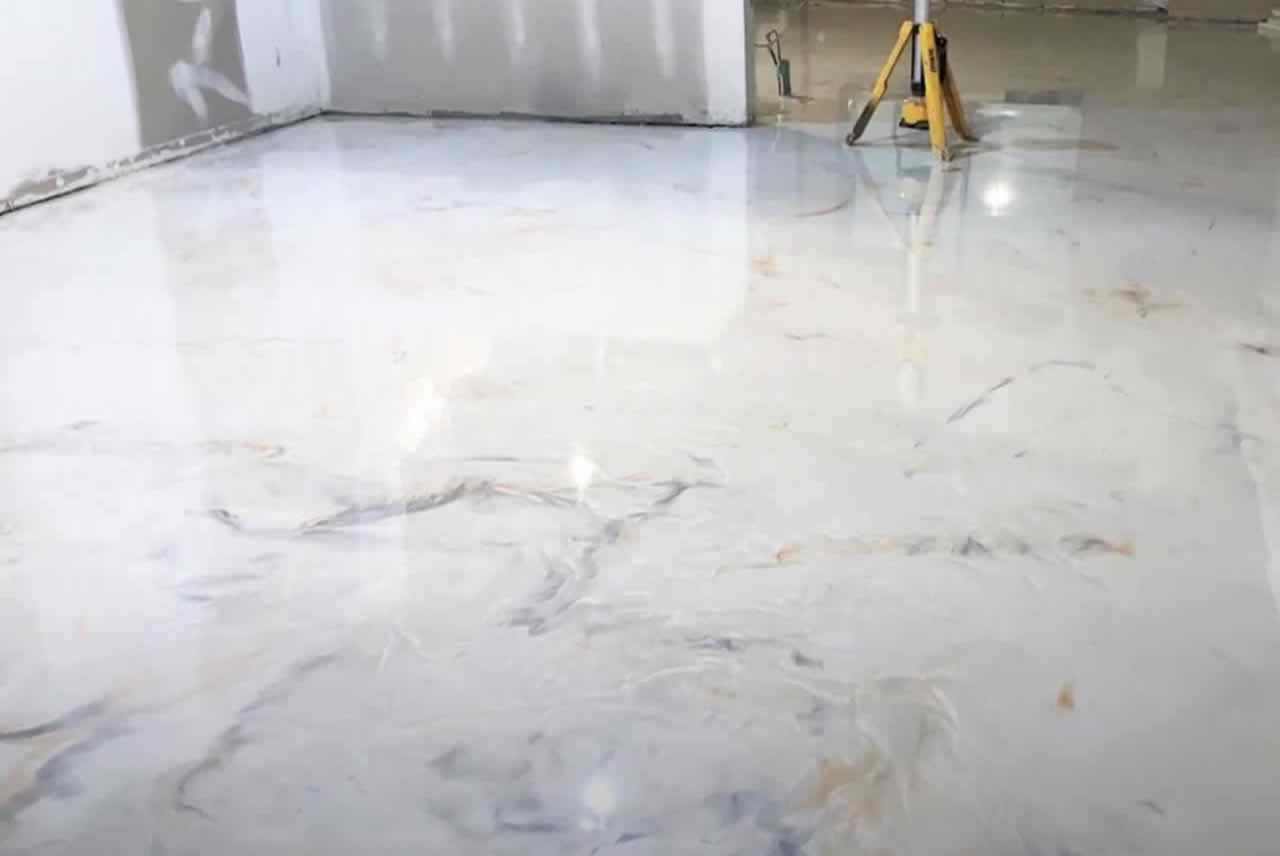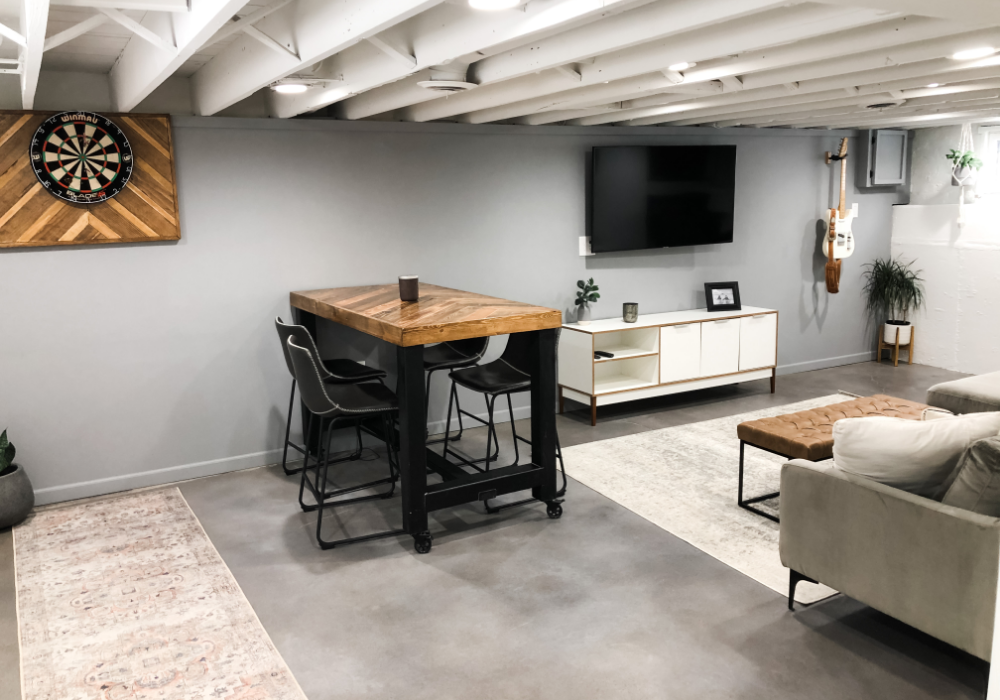Basements have long been seen as dark, underutilized storage spaces—but not anymore. Homeowners are increasingly turning to cost-effective upgrades to convert their basements into livable, stylish areas. One standout solution? Decorative concrete.
If you want a budget-friendly basement makeover that’s durable, easy to maintain, and incredibly versatile, decorative concrete is one of the smartest investments you can make.
In this detailed guide, we’ll explore how decorative concrete can transform your basement floor or walls into a beautiful, functional space, all without breaking the bank.
What Is Decorative Concrete?
Decorative concrete refers to concrete that’s enhanced with color, texture, or pattern through a variety of finishing techniques. Instead of a dull gray slab, your basement floor can now look like polished stone, hardwood, tile, or even marble—at a fraction of the cost.

Common Types of Decorative Concrete for Basements:
- Stained Concrete
- Stamped Concrete
- Polished Concrete
- Epoxy Coatings
- Overlay Systems
- Scored and Engraved Concrete
Each technique offers a unique aesthetic and serves different purposes depending on the look and function you want for your space.
Read More: What’s New in Cabinet Hardware? 2025 Trends, Styles & Finishes
Benefits of Decorative Concrete for Basements
1. Cost-Effective Flooring Option
Compared to hardwood, tile, or luxury vinyl plank, decorative concrete is more affordable, especially if your existing slab can be resurfaced.
Read More: How to Choose Kitchen Cabinet Hardware to Match Your Decor: A Complete Guide
2. Durability
Concrete is incredibly resilient, standing up to foot traffic, moisture, spills, and abrasion—perfect for high-use areas or family playrooms.
Read More: How to Choose Cabinet Hardware: A Complete Guide for Homeowners and DIYers
3. Low Maintenance
Sealed decorative concrete resists dust, mold, and stains. A quick mop or vacuum is all you need to keep it looking great.
Read More: How to Fill in the Gap Between Your Front Door and the Floor | DIY Weatherproofing Guide
4. Moisture Resistance
Basements are often humid or prone to minor leaks. Decorative concrete can be sealed with a moisture barrier coating, making it resistant to water damage.
Read More: How to Replace an Exterior Door Without Replacing the Frame
5. Custom Design Options
From natural stone patterns to metallic finishes, decorative concrete gives you the freedom to customize your basement exactly the way you want.
Read More: What Are Common Bathroom Remodeling Projects? | Complete Guide for Homeowners
Cost Breakdown: Decorative Concrete vs. Other Basement Floorin
| Flooring Type | Average Cost per Sq. Ft. | Durability | Water Resistance | Maintenance |
|---|---|---|---|---|
| Decorative Concrete | $3 – $10 | High | High | Low |
| Tile Flooring | $7 – $15 | Medium | High | Medium |
| Vinyl Plank Flooring | $2 – $7 | Medium | High | Low |
| Laminate Flooring | $1.50 – $5 | Medium | Low–Medium | Medium |
| Carpet Tiles | $2 – $6 | Medium | Low | High |
Note: Costs can vary based on location, finish quality, and whether you DIY or hire a contractor.
Read More: When Is the Right Time for a Bathroom Remodel? | Signs & Seasonal Tips
Popular Decorative Concrete Styles for Basements

1. Stained Concrete
Using acid-based or water-based stains, you can color the concrete in natural tones like terra cotta, brown, gray, or green. This technique penetrates the surface, creating rich, translucent effects.
Best for: Finished basements, entertainment rooms, wine cellars.
Cost: $2 – $5 per sq. ft.
Read More: What Should I Consider Before Starting a Bathroom Remodel? | A Complete Homeowner’s Guide
2. Stamped Concrete
This technique mimics the look of stone, tile, or brick by pressing molds into wet concrete. It’s most often used for patios but can be adapted indoors with overlays.
Best for: Rustic or traditional basement aesthetics.
Cost: $8 – $12 per sq. ft.
Read More: How to Select the Right Materials for Your Bathroom Remodel: A Complete Guide
3. Polished Concrete
Polishing involves grinding the surface until it’s ultra-smooth and then sealing it for a glossy finish. You can even add metallic flecks or dyes for a modern look.
Best for: Modern or industrial-style basements, home gyms.
Cost: $4 – $8 per sq. ft.
Read More: What Do You Do First in a Bathroom Remodel? | Step-by-Step Guide to Starting Right
4. Epoxy Coatings
Epoxy resin coatings can be tinted and combined with flakes, quartz, or metallic finishes to create stunning, durable floors. They also act as a moisture and stain barrier.
Best for: Game rooms, workshops, home gyms.
Cost: $3 – $7 per sq. ft.
Read More: How Many People Does It Take to Do a Bathroom Renovation? | A Full Breakdown by Role and Scope
5. Concrete Overlays
If your slab is cracked or uneven, a concrete overlay can smooth and renew the surface before applying decorative treatments. Overlays can be stamped or stained.
Best for: Older basements with surface damage.
Cost: $3 – $10 per sq. ft.
Read More: Why Do Bathroom Remodels Take So Long? | A Deep Dive Into Delays and Timelines
DIY vs. Hiring a Pro
Many decorative concrete techniques can be DIY-friendly, especially staining and epoxy coatings. However, stamping and polishing often require specialized tools and experience.
DIY Pros:
- Saves money
- Learn a new skill
- Personal satisfaction
DIY Cons:
- Time-consuming
- Mistakes can be permanent
- Requires tools and protective gear
For best results—especially for long-term durability and finish quality—consider hiring a decorative concrete professional for complex designs or full basement projects.
Read More: What Do You Need for a Bathroom Renovation? | A Complete Guide for Homeowners
Tools & Materials for DIY Decorative Concrete
If you plan to tackle the project yourself, here’s what you’ll need:
- Concrete cleaner/degreaser
- Etching solution or grinder
- Acid or water-based stain
- Epoxy or concrete sealer
- Roller brushes and sprayers
- Painter’s tape
- Protective gear (gloves, goggles, mask)
Read More: Best Tips to Follow for Bathroom Renovation: A Homeowner’s Complete Guide
Moisture Check: Crucial Step Before You Start
Basement floors must be dry and clean before applying any decorative concrete treatment.
How to test for moisture:
- Tape a 2ft x 2ft plastic sheet to the slab.
- Wait 24–48 hours.
- If condensation forms, there’s excess moisture—use a vapor barrier or moisture-blocking primer.
Read More: What Is Involved in a Small Bathroom Remodel? | Complete DIY and Budget-Friendly Guide
Where to Use Decorative Concrete in the Basement
Decorative concrete isn’t just for floors! It can also be used on:
- Basement walls for a faux stone or textured look
- Concrete stairs for improved safety and aesthetics
- Fireplace surrounds
- Built-in bar tops or counters
Read More: How to Remodel a Bathroom DIY: A Complete Step-by-Step Homeowner’s Guide
Tips to Get the Most from Your Decorative Concrete Upgrade
- Use area rugs to warm up the space and soften acoustics.
- Seal the floor every few years to maintain color and durability.
- Choose neutral tones if you plan to sell your home in the future.
- Add LED lighting to highlight your concrete finish’s texture and shine.
Read More: How to Hang a Floating Shelf on Drywall: A Complete DIY Guide
Final Thoughts: Is Decorative Concrete Right for Your Basement?
If you’re looking for a budget-friendly basement upgrade that offers beauty, durability, and versatility, decorative concrete is a top contender.
Whether you’re creating a cozy media room, a high-energy gym, or a sleek home office, decorative concrete can help you elevate the space without elevating the cost.
It’s more than a flooring option—it’s a long-term investment in the comfort and style of your home.
